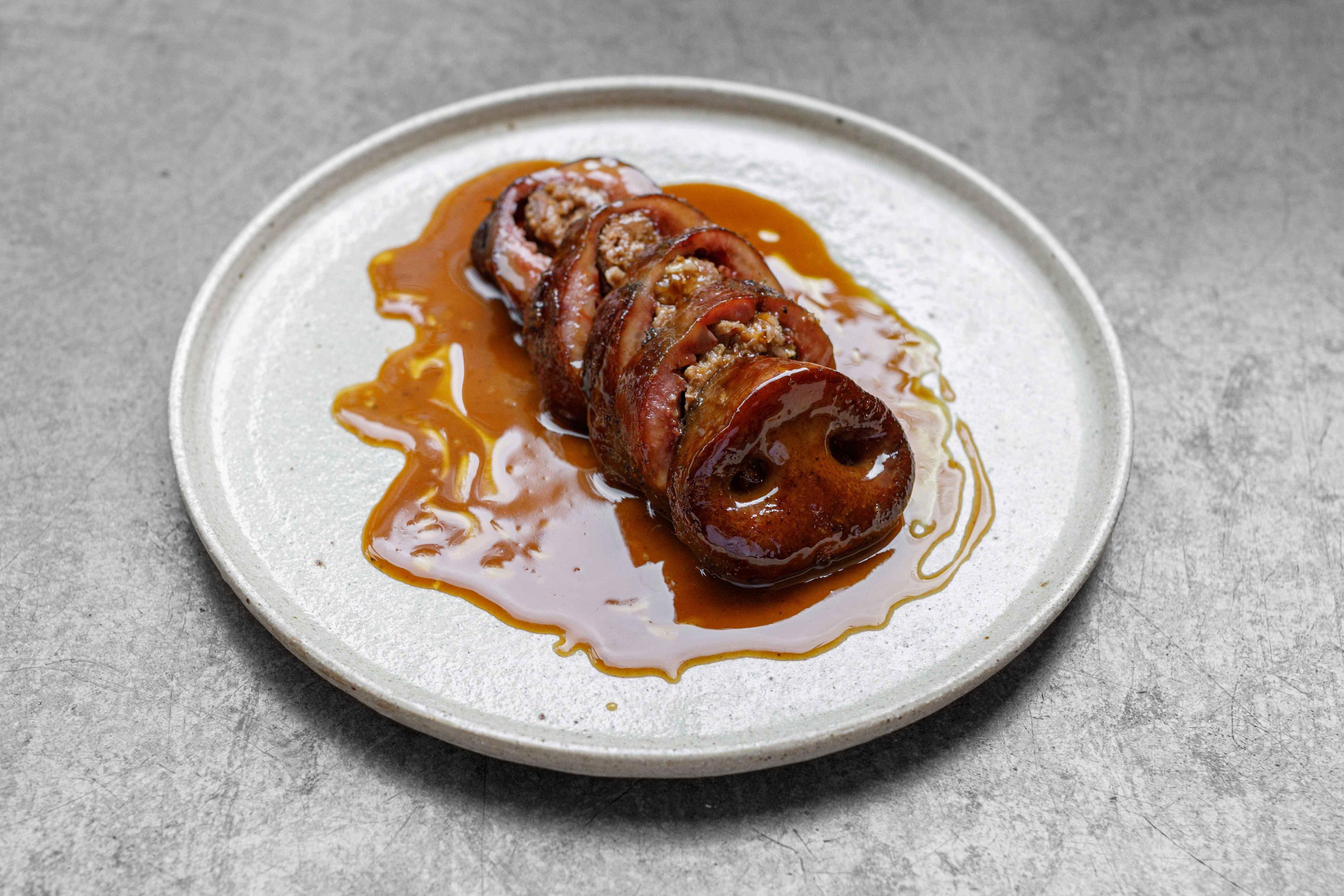As I walked past the meat section of the supermarket the other week – that overlit, glacial corridor where even the choicest bits of steak are made to look worryingly grey – I couldn’t help but notice the disparity in price between the different cuts of meat. I realised at that moment that I’d never taken the time to properly compare the prices between a pig’s blushing chops and the ropier parts of the beast.
My findings were this: pork liver was £2.20 per kilo, the pork loin steaks retailed for around £6.25 per kilo, and some fancy-looking teriyaki-coated pork belly slices came in at £10 per kilo. Not exactly a “stop the press” discovery but seeing that price disparity got me thinking about how offal might just be the most underrated and the most overrated part of the animal. Underrated in the sense that it’s often ignored by most regular shoppers but overrated in how it’s lauded as manna and the sign of a refined palate by many professional chefs. If you don’t like offal, you’re probably not going to be sitting at the cool kids table during the next MAD World Summit.
Regardless of whether you’re a chef chasing a Michelin Bib Gourmand, though, buying the unloved offal and often-forgotten cuts of meat is still one of the best ways to get bang for your buck at the butcher's. Not only are liver and kidneys much cheaper than the sexier, more marketable slabs of breast and thigh but they’re packed with a lot more flavour. A little goes a long way when it comes to the humble kidney; for example, an organ with a musty, mineral flavour that adds a real brunt to whatever dish you deploy it in.
Even at HG Walter (the bougie butcher’s near my flat), you can nab 250g of chicken livers for just £1.75. Eating the whole animal and treating every last part of its anatomy with reverence has long been a proponent of Fergus Henderson. Fergus, whose seminal Nose to Tail Eating: A Kind of British Cooking gave the face of modern British cooking a much-needed facelift, caused a sensation when he opened up his St. JOHN restaurant in 1995. Typical dishes on the menu included pigs' ears, trotters, and tails along with the hearts and bone marrow of various other critters. The Smithfield restaurant has even been known to serve squirrel when they’re in season.
Convincing artists and actors that bone marrow was just as worthy of its place in a fine dining setting as a filet mignon was no easy feat but St. JOHN wasn’t the first restaurant to specialise in these deep-cut cuts. Many of Britain’s Chinese restaurants have long included everything from snout and trotters to chicken feet and oxtail on their menus. Whole animal eating has always been there (minus, perhaps, the squirrel) if you were willing to look for it. In Chinese culture, there’s a strong belief that taking an animal’s life is a very serious thing to do and that none of an animal should therefore be allowed to go to waste. It’s a damn sensible outlook, and one I think we should all try to adopt in our day-to-day lives.
Dishes like pressed pig's ear and deep-fried tripe are staples in countless spots across the UK’s many Chinatowns. The ox tripe kebab at Camberwell’s Silk Road, a nod to the restaurant’s Xinjiang roots, is one of my favourite renditions of offal in the capital.
When talking about off-cuts it’s impossible to ignore regional sausages like the Thai sai krok Isan and the Vietnamese dồi tiết – a pungently delicious cylinder of pork blood, pork fat, and basil that always hits the mark. Those sausages are what a Richmond would be if it wasn’t such a coward and had a lot more guts. Literally. Manteca, a new-ish nose-to-tail restaurant in Shoreditch, has an Italian-inspired menu that sees eye to eye with the Viet and Thai belief of incorporating the whole pig. Standout plates include a crisp and juicy pig's head fritti as well as a pot of pig skin ragù that comes complete with a sail-sized chicharrón of more crispy pig skin. But where does an English chef get the chutzpah to put something like that on the menu?
“I got a copy of Nose to Tail Cooking by Fergus Henderson when I first started cooking,” says manteca’s executive chef Chris Leach, “that was a book I used to enjoy looking at for inspiration and then, when I moved to London, I used to eat at St. JOHN a lot – that was always my go-to place. It was inspiring to be there. It was just no-nonsense, straight up, ‘it is what it is’ on the plate cooking and real, hearty flavours.”
Manteca achieves a similar no holds barred impact through its dogged commitment to using up every part of the pig. Not many restaurants in the UK can say that their best-selling dish is a pig skin ragù, yet, for manteca, that’s very much the case. Part of the appeal for a chef like Chris involves the difficulty of turning those unloved bits of meat into something loveable. Being able to work well with offal is a sign that you know what you're doing in the kitchen and a real test of a chef’s skill.
"All those weird cuts and joints and bits of offal requires a bit more attention or a bit more skill as a cook,” explains Chris, “and that was always quite enjoyable to learn; that way of taking something that's a bit gnarly for a lot of people and turning it into something that's delicious and approachable."
Everyone knows there’s more to a pig than pork chops but even the more open-minded east London clientele have found the stuffed pig’s snout that ambles its way across manteca’s specials board to be a hard sell. Take a look at that dish, and it’s not hard to see why.
